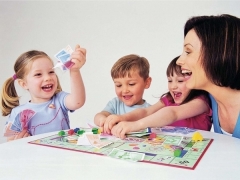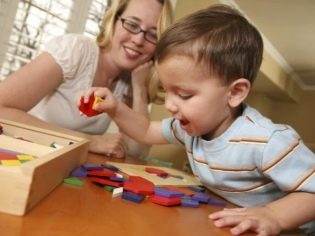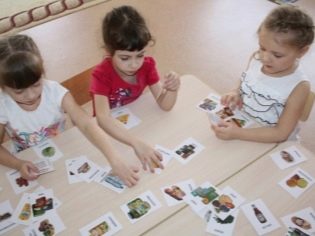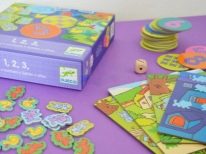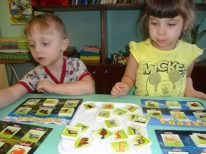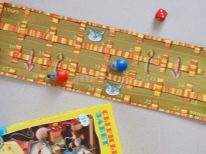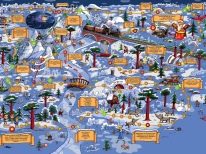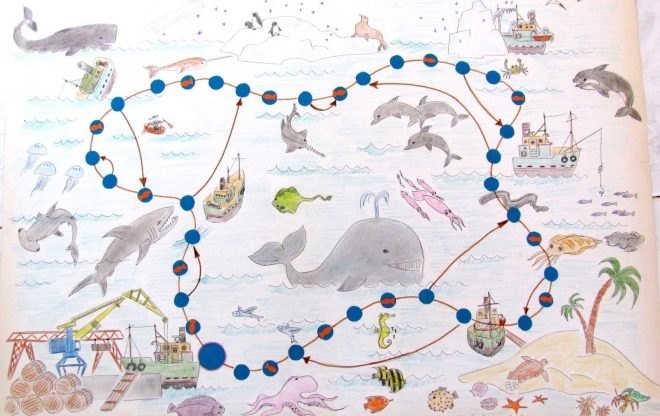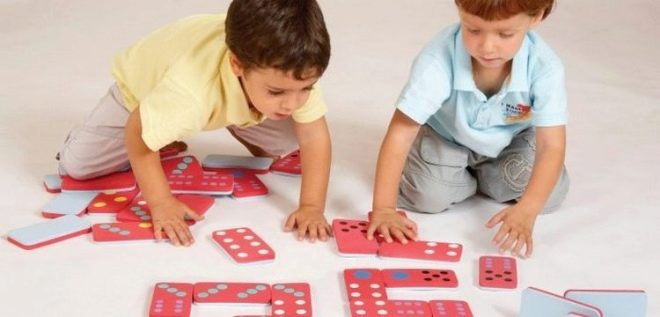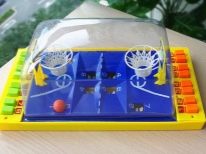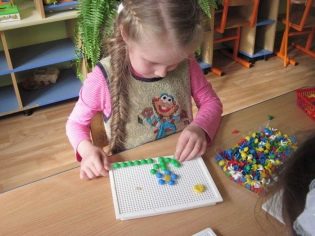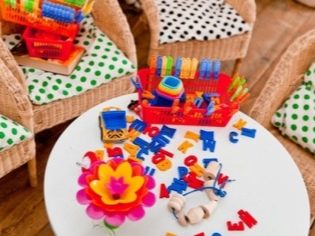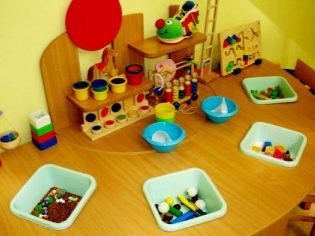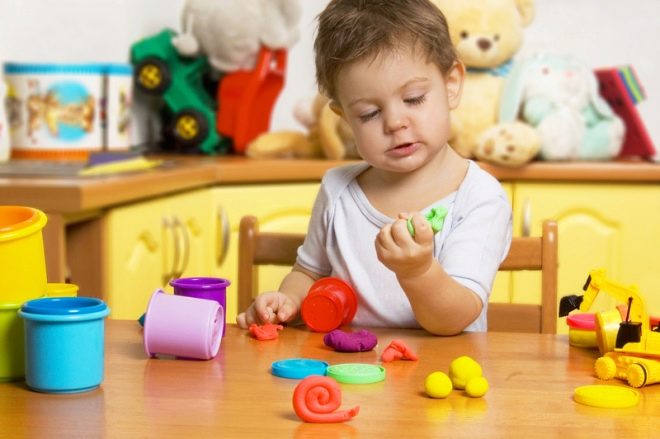Board games for children 2-4 years
In the past one and a half or two decades Board games ceased to be very popular due to the rapid onslaught of computer games and special gaming gadgets, but the demand for them has not completely disappeared. Today, board games designed for different age categories of players are still being produced, but now young children have become the main target audience for such products. Many realized that this entertainment has a pronounced benefit. Some parents buy board games for children 2-4 years.
Benefit
Among adults, it is widely believed that any children's games (although active, though board games) do not carry any other content than entertainment. Such an understanding of the gameplay is fundamentally wrong, since 99% of the games somehow contribute to the development of the child.
Perhaps the only exception can be called those games that contain a certain amoral sense or provide moral humiliation of the loser.
If we talk about board games for children 2-4 years, then there are no useless options at all - each gives useful practical skills.
Training
In his 2-4 years, the child is still too small, so even those tasks that seem elementary to us may be difficult for him - and even unsolvable. Such a kid does not always confidently count to ten, not to mention larger numbers, has a relatively poor vocabulary, insufficiently developed motor skills and a very short-lived memory.
All these qualities need to be developed, but the crumb doesn’t completely understand their values, so he will not purposefully do it himself. It remains only to interest him so that he himself constantly wants to improve these and other skills.
And here it turns out that even ordinary "hodilki" are useful, because there will have to count the moves, and let the numbers be small, but the counting speed will increase greatly with time.
These or other types of dominoes and lotto will help to memorize more new words, which is useful for both vocabulary and training. of memory. There are also reaction games that improve the child's physical activity.
Socialization
In the modern world, the one who is able to quickly and correctly establish contacts with any people achieves the greatest success. This quality is not innate, anyone can learn it, however, it is necessary to start learning at the earliest possible stage - only in this way the child will grow up an open person. Board games are great for this purpose, as they are exciting enough to interest most children, and usually require at least two players.
If the gameplay is organized in the family circle, then all members have the opportunity to spend time together - even if their interests and hobbies in general do not coincide. In addition, the game relieves stress and normalizes the family atmosphere.
Understanding the true meaning of board games, they are actively used in kindergartens, which allows kids to make new friends. It develops communication skills and allows you to learn a lot of interesting things. Kindergarten friends are likely to be forgotten in junior school, but the skill of searching for friends will remain.
Mood enhancement
In the end, in the entertainment (even without regard to the practical component), too, there is nothing bad.No parents will want their children to be unhappy - you should also take into account that this will result in problems for the parents themselves, who will have to soothe a crying or simply dissatisfied baby.
In addition, if a child feels good, he is almost always alert and active, and in this state it is much better to perceive any new knowledge and skills - it turns out that a timely dose of positive helps to improve learning and speeds up the development process somewhat.
Psychologists who have carefully studied this issue also point to behavioral aspects of the developmental effect of board games. In particular, children are usually quite picky, they are not always easy to accustom to any rules (and in general the concept of rules). Only a game in which either you observe them, or do not play at all, allows you to give the kid that skill, without which he can not do in life. Board games allow you to teach your child, without serious consequences, that everything will not always be in his favor., but this is not a reason to get upset or give up.
Varieties
In terms of variety, board games for children 2-4 years old are somewhat inferior to games designed for older age groups - this is caused by a relatively small number of skills already available for players of this age. However, the games are not very different only in content, but there are countless forms to come up with. It is worth highlighting the best educational games of various types.
If you strictly pursue the goal of learning, you should pay attention to the so-called didactic games. Their specificity is that they do not provide for winners and losers, and there’s usually only one player - a child. The game itself is initiated by adults and is not even similar to a game, but to a task, but so well disguised that the child perceives it exclusively as entertainment.
If you need specific examples of such games, then the most striking example can be a lotto in which, for example, you need to “feed” painted or printed animals with chips with the food they prefer. In the process, the baby acquires elementary environmental knowledge and associative thinking skills, trains memory. If you ask him to also call animals and their favorite food, you can also develop a speech apparatus.
Similar topics can be developed by other associations - for example, who lives where, fruit and vegetables.
If desired, the didactic game can be done independently. The simplest thing is to take the same boxes (three pieces) and paste over them with colored paper of different colors, and then cut fruit figurines from the same colored paper. Mix the resulting chips and ask the child to sort them into boxes, focusing on the color, and at the same time let him pronounce the names of the colors. If the products are bright and beautiful, the child will definitely like it.
Another common type of board games for toddlers is hodilki. Of course, people of any age can play such games, but only for very young children such a gift can provide real development. First of all, the players have the counting skills necessary to walk. Since for 2–4 years old standard cubes can give out too large numbers, manufacturers often equip game sets with special cubes, where the maximum number of moves is limited to three or four, which even a very tiny child can do.
However, the benefit is not only in teaching the account - an important role is also played by the external entourage, which was originally intended to interest children. After all, no one goes to the finish line abstractly - there is always a certain plot, be it racing cars, each of which wants to come first, or fairy-tale heroes hurrying to help their comrade, or even conventional mice who want to eat cheese as soon as possible.
For adults, this is just a shell, and the kids, finding themselves in a new situation, present themselves in the place of the acting heroes, begin to reflect on what they would never have thought of in everyday children's life.
This contributes to the development of fantasy, and in the future - the ability to think creatively, not to mention that an unfamiliar storyline can give the young player some new information about something he did not know before.
A walker is also quite easy to do yourself, especially in the age of computer technology. For the field, you can use any picture you like from the Internet, complementing it with walking cells through a graphic editor. A game dice is sold at every toy store. The situation with gaming chips looks a bit more complicated, but they can be cut out of colored cardboard. It remains to come up with an exciting plot - and you can create a really interesting game for the kid, which you will never find in stores.
Another popular children's game is dominoes. This option is great for kindergarten, because it allows a relatively large number of participants - up to 4-6 people. The game set itself does not contain paper elements, there are only relatively heavy bones, which allows using summer playgrounds and fresh air for playing.
In the children's dominoes (in contrast to the “adult” variants), not numbers, but pictures are used. The theme is the same: animals, vegetables and fruits. Although the game seems to be quite primitive, it greatly contributes to socialization, and most importantly, it requires the most high level of development among all those mentioned. At a minimum, one cannot do without a clear understanding of the rules, and this requires active mental activity.
The child is not limited by the need to do what the cube will say (unlike the same walkers) - he can choose which bone to give him, and over time he will begin to understand how to use it to win. In addition, due to the use of different images on the children's dominoes, the child quickly memorizes their names.
He replenishes vocabulary and trains memory, and the gameplay itself certainly provokes discussions between players, further stimulating the skills of mental activity and speech.
The use of “adult” domino sets at the age of 2-4 years is impossible for two reasons - it seems to kids too boring without pictures, and it’s still harder for them to master than pictures.
A few more versions of games for children of this age group, see the following video.
Tips for choosing
A board game is usually perceived as a pretty good gift, but (like any other product) it can be chosen both successfully and inappropriate. Since it is presented so that the child receives useful skills at will, and not when he is forced, it is very important that the game be liked by the child, that he becomes interested in it and starts playing regularly.
There are some simple tips on how to achieve your goal:
- For a child, a game is a holiday. Even if she makes him think hard, he himself still enjoys not the process of solving a complex problem, as in chess, but from the entourage. For this reason, a board game for a small child should be bright and beautiful, and also assume a certain legend, resembling an interesting fairy tale.
- The child plays for the sake of bright positive emotions, he does not think about the benefits - this is how he differs from an adult who plays the tenth game of chess in a row, but still sits down as the eleventh one. This means that the task set by the rules of the game must be accessible both for understanding and for execution - even by so small children. Otherwise, the gift will be rather quickly forgotten, since it is not only the brightness of the parts that “touches”, but also the process of engagement.
You can be sure that the process of third-party observation will bother you much faster than your own active participation, and there will be much less benefit.
- In 2-4 years, children usually have no pronounced preferences regarding board games.however, they can already be laid this way now. At a minimum, do not buy boys games about princesses, and girls games whose plot even superficially mentions wars, battles, and any coercive problem-solving.
During these years, the very first hobbies are formed, but they can either disappear within a couple of years, or gain a foothold for life.
Reviews
The overwhelming majority of comments on board games for children 2-4 years old express positive emotions. Children are drawn to everything bright and are really addicted to such gifts, and the effect is seen rather quickly - the kids who constantly play board games are more developed than their peers.
There are other promised benefits - for example, having more friends, increased sociability and a good mood, and in those families where board games are practiced at home, a warmer atmosphere is noted. Many parents specifically distinguish designers who, with a relatively small set of meanings of the game, came up with dozens and hundreds of different visual designs.
Critics are extremely few, and it concerns exclusively low-quality parts of the game, which is really likely when choosing in favor of low-cost options.
